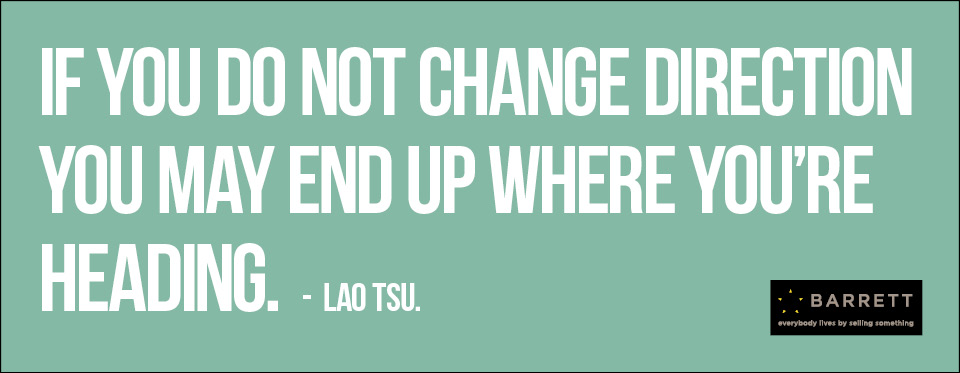
We all know that creating a better sales team, better sales culture, better sales leadership and better sales strategy that delivers better sales results does not happen by attending the occasional sales training workshop. Though it doesn’t stop sales leaders from opting for the ‘quick fix’ annual sales workshop to show that they are ‘doing something’ to drive better sales results. In short, these leaders would be better off doing nothing and saving their money, time and effort.
Metaphorically speaking, the sales training workshop (or 1-5 days depending on how much money you have to spend) is the tail of the dog. It’s pretty useless without all the other things we need to have in place. And if we are asking salespeople to change how they do things – small or large – which is usually the reason why people are attending sales training, then no real sustainable and meaningful change will happen without a change in routine i.e. ‘the way we do things around here’.
If we ask for change in the training and we don’t change the environment and routine salespeople are returning to, then we will not see change for the better. So in our effort to create better sales teams we need to look at how to facilitate this change.
There is a great article written by Wendy Wood and published in the Washington Post on 31 December 2015 called ‘Five myths about our habits’ [1]. Clearly it was aimed at the New Year’s resolution fad that seems to grip people at the start of a new year.
Wendy debunked a number of prevailing myths and instead presented more realistic information about how we can create better habits and achieve better outcomes. Here are some of her tips that also apply to our desires in this context of creating healthy productive better performing sales teams and businesses:
Change the routine and environment
- If you want new habits to form do not send your sales team (or anyone) back into the same routine and environment as before because the old habit associations will endure.
- Modifying our routine lets us reshape our and others’ behaviour without having to rely on will power. Unwanted habits can be disrupted by changing the cues that activate them.
- Altering our surroundings can set up key cues to promote the desired behaviours. The environment is key to creating the right context and the right activities.
- We learn not by learning as such but by doing – that is so true for sales. Good sales habits are formed through practice.
Don’t rely on and promote the illusion of ‘self control’
- Interestingly many behaviours are not guided by self-control, as most of the tasks we do each day we do without thinking.
- People with high levels of self control are NOT constantly battling temptation because they simply rely on good habits to keep them on track without having to think about it too much. High self control is an illusion.
- Instead ‘high self control’ is underpinned by a bedrock of habitual patterns. That is why highly successful salespeople are so self disciplined.

- There is no magical number when it comes to the number of days it takes for each of us to change or shift a habit.
- The time it takes to change a habit will depend on the habit itself i.e. it can take anywhere from 18 days to over 1 year. Researchers found that it takes about 66 days on average to form a new habit.
- While repetition is important, successful transition from an old habit to a new one goes back to the type of routine you have created for the new habit to form. Old routines will not work.
What does this mean for sales leaders and teams?
- First, sales leaders need to map what skills, knowledge, activities, behaviours and habits they want to see in their salespeople and themselves that will deliver their sales strategy objectives.
- Identify (and as a leader help identify) the existing routines and habits and find out which ones you want to keep, change or abandon.
- Then you need to map and plan how you need to change the current routines and environment to accommodate the new way of doing things.
- Sales leaders should then organise resources and get buy-in from the business, both sales and the rest of the organisation, to support the new routines and environment.
- Then sales leaders have to roll out the new standards they want their teams and themselves to adopt, and work to introduce the new routine in the prepared environment. This includes new or different ways to run sales meetings, coach and train people, report on activities, follow up, conduct client meetings, prospect, plan and so on. Whatever you want to change.
- Old habits love to sneak back in, especially when you’re very busy and time to pause and reflect is sparse. Acknowledge that a constant reinforcement for using the new standards and supporting the new routine will be necessary. Because old habit associations endure and hinder behavioural changes, even after people adopt new intentions these regular pokes and reminders, as well as follow-ups with the individuals and the teams are crucial.
Remember Selling is a doing job and cannot be changed from attending an event. So, how do you need to ‘sell around here’ to sell better?
[1] Washington Post, Five myths about our habits, by Wendy Wood 31 December 2015
Remember everybody lives by selling something.
Author: Sue Barrett, www.barrett.com.au


New Article Email Notification